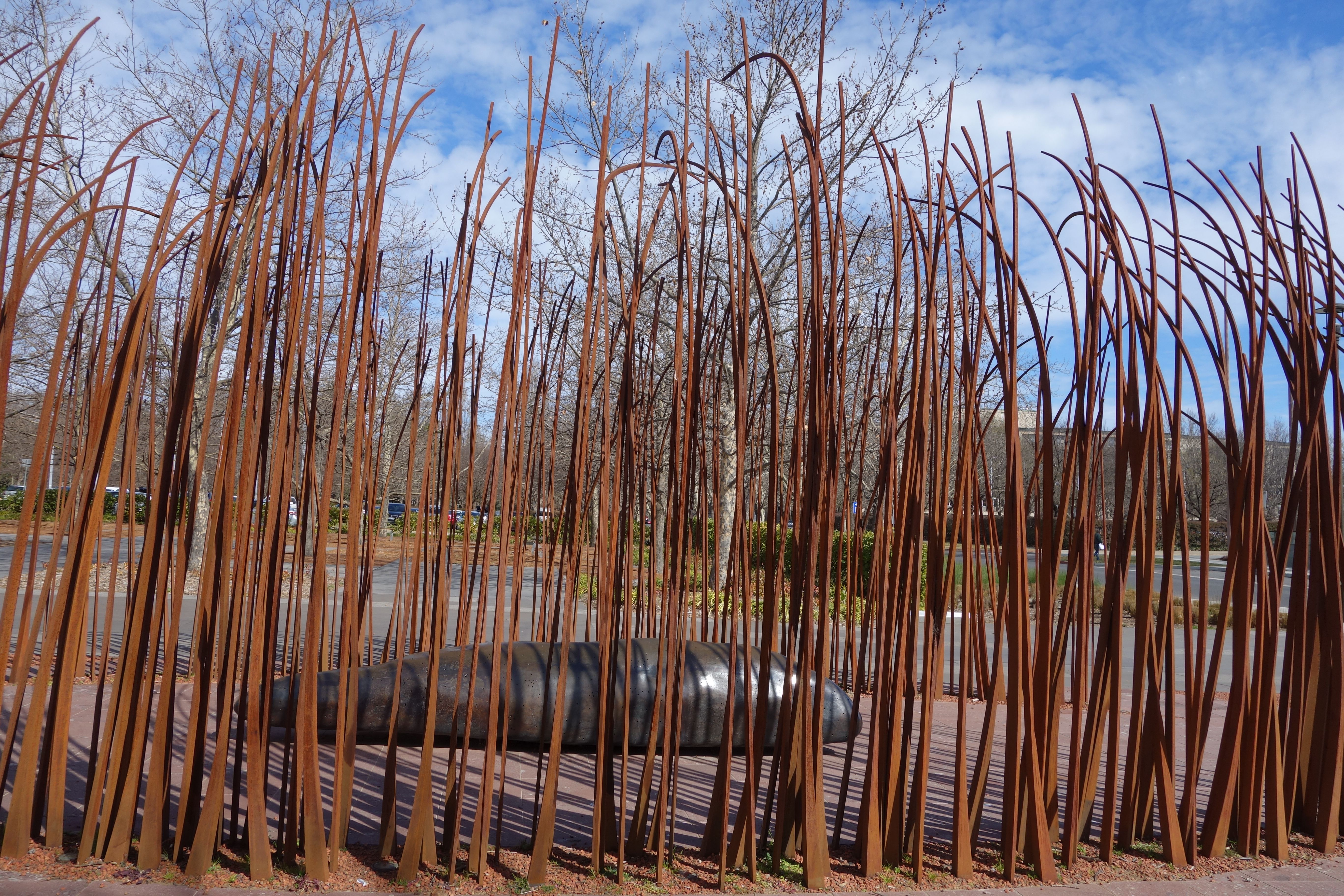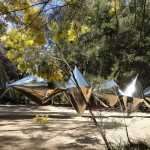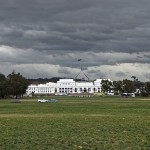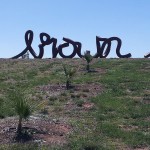Judy Watson, an indigenous artist, created this sculpture, Fire and Water. It’s textural…

You’ll find it in Reconciliation Place, Canberra, where there are a number of sculptures by Aboriginal artists. Since this particular artwork is called Fire and Water, I’d always thought the grey object amid the fiery reeds represented a seal or dugong. But on closer inspection today, I saw it’s not an animal, but a stone. A gathering stone. Muted sounds are constantly playing through small holes all over it, representing bogong moths flying in on their annual migration and people gathering to feast on them. Michael Hewes designed the sound.
Looking between the two stands of rusty reeds, we see the National Library, one of my favourite haunts. In this wintry season, the reeds echo the hibernating poplars in the library forecourt. At the moment I took this photo, two jets in the fountain were working. That was just luck; the fountain is not always turned on. The elements in the photo are a great example of symmetry in this city of many symmetries.

Bogong moths pass through Canberra every year in about September. Last year they were in plague proportions, congregating on many of the national institutions in the parliamentary triangle, and particularly in Parliament House. At night they’re attracted to the powerfully lit flagpole on top of the House. We all had moths flying and dying in our homes, which was annoying for those of us who don’t eat them.
Since we’re thinking of texture for this week’s photo challenge, take a look at this image from another Canberra photographer, Donald Hobern, of a bogong with its fluffy head and carpet-like wings. When they land on tree bark they’re well camouflaged. But I can tell you, while one individual moth might look beautiful in a close-up, a crowd of brown, fluttering moths resting up in a corner of your room is not attractive. But thanks to Judy Watson’s sculpture, I learnt that they’re edible, and even delicious, and I was reminded once again that nothing is completely ugly or useless.

Take a look at more textures on the WordPress photo challenge page for this week.





This is fascinating.
Are people that desperate, to eat moths… strange,, fascinating pictures with equally so story.. 😉
Aboriginals eat them; they’ve always eaten what’s native to Australia. It’s known as bush tucker. I’ve never tried them myself. 🙂
We have had several programs recently on tV, about surviving in the bush,and bush tucker.. some English survival guy went and lived with the aborigines and filmed how to survive and eating all sorts of stuff, most made my stomach churn… but I suppose what you are used to… 😉
I like the sculpture – must be new since we were last down that way. As for the bogong moths, supposedly a nutty taste, Trish, but like you, I am happy to let someone else do the tasting 🙂
The date I found for the sculpture is 2007. Reconciliation Place is an interesting place to walk, with its numerous sculptures that require a bit of reading along the way and some brain work for the puzzles.
Such interesting photos. And I’d give that moth a try. I think. 😉
You’d be brave to eat moths. I’m not that brave, but then perhaps if I were hungry enough…
I’m hungry enough every half hour! That’s my problem. LOL
nice photos, there is a lot of texture in them as for eating moths, the texture might be interesting… but I suppose before we had supermarkets and farming brought to us, you’d eat anything to keep going or you didn’t keep moving… i suppose our forebearers ate some very interesting things… I am glad I can eat Brussels Sprouts instead of moths.. have a great week
Thanks for your thoughts. Yes, I’d probably eat Brussels sprouts before moths. But then I’m not nomadic as the Aboriginals were (are?).
Your mode oof explaining everything in this post is really
pleasant, all can easily knnow it, Thanks a lot.